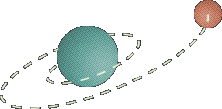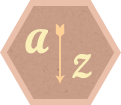the Science~ four main areas we study ~
Active Research
GW1509014: LIGO Detects Gravitational Waves
Created on February 11, 2016
On 14 September 2015 at 4:50:45 AM Eastern standard time, LIGO detected its first gravitational waves. The waves descended on Earth from the southern hemisphere, passed through the Earth, and emerged at the Earth’s surface first at the LIGO interferometer in Livingston, Louisiana, and then, 7 milliseconds later, at the LIGO interferometer in Hanford, Washington (shown below).
Tidal effects in binaries involving neutron stars
Created on February 1, 2016
To detect and characterize gravitational waves from neutron star binaries, LIGO needs good models of all possible signals. Numerical relativity can’t practically be used for every case, but it is needed to test and calibrate the simpler models that LIGO can use. Inspiral waveforms from binaries with neutron stars differ from binary black hole waveforms by the presence of tidal forces. In a recent paper, Tanja Hinderer and collaborators use SXS black hole-neutron star simulations to validate a new model of these tidal forces. They find that tidal effects can be stronger than previously expected when they come close to resonance with a neutron star’s preferred ways of ringing (its normal modes of oscillation).










